


Authors: Sopho Gelava, Head of the Investigative Media Lab of the University of Georgia
Anton Vatcharadze, Direction Head of Memory and Disinformation Studies, Institute for Development of Freedom of Information (IDFI)
Translated by: Sandro Rochikashvili, Analyst, Institute for Development of Freedom of Information (IDFI)
Russia's modern information operations and methods are a legacy of the Soviet Union. The very term "disinformation" is from the dictionary of the State Security Committee of the USSR (KGB) and means the deliberate distortion of information and its subsequent dissemination. Disinformation was an important component of the Soviet Union's "active measures," with "active measures" being a set of measures aimed at influencing political sentiment and public opinion through deception and covert/secret operations.
The Soviet Union had taken the formation and dissemination of disinformation to the level of policy. "Department A", which functioned within the KGB, was responsible for the implementation of active measures. Stanislav Levchenko, a former KGB agent, said that along with traditional espionage, "active measures", including the creation of disinformation campaigns, were an important part of the work of each resident agent.
This blog post is based on the joint research of the Institute for Development of Freedom of Information and the Investigative Media Lab of the University of Georgia, within the framework of which a ten-year period (from 1970 to the mid-1980s) of the newspaper "Communist" was analyzed using narrative and discourse analysis tools. The selection of the 1970s was based on the fact that during the mentioned period, historical changes of international significant took place, which the USSR actively covered. Among thesewere anti-war demonstrations in America and the withdrawal of US troops from Vietnam; the deposition of the Shah of Iran and the establishment of the Islamic Republic; war in the Middle East between Israel and Arab countries; the entry of Soviet troops into Afghanistan; and many others. The Soviet methodology of disinformation and propaganda, which tried, on the one hand, to demonize the West and, on the other hand, to strengthen its own regime, can be observed in the coverage of these international news by the USSR. Similar types of narratives are still used in contemporary political discourse to create and reinforce anti-Western sentiments.
The blog draws parallels between Soviet Union propaganda and modern Russian news operations, both in terms of topics and narratives, and in terms of methods of dissemination of propaganda.
The West: a space where life is difficult
The Soviet portrait of the West is an image of instability, chaos, and inhumanity. The propaganda against Western countries, mainly the USA, is formed with interesting narratives with regard to unemployment: for example, that the industrial states of the North are being emptied and the population is migrating to the less developed South... that there were 2,263 strikes in London during 1975. In the case of Britain again, "Communist" wrote on August 3, 1976, that only ⅓ of the several thousand students in London would be able to enter higher education, and the rest would join the army of one and a half million unemployed.
foto
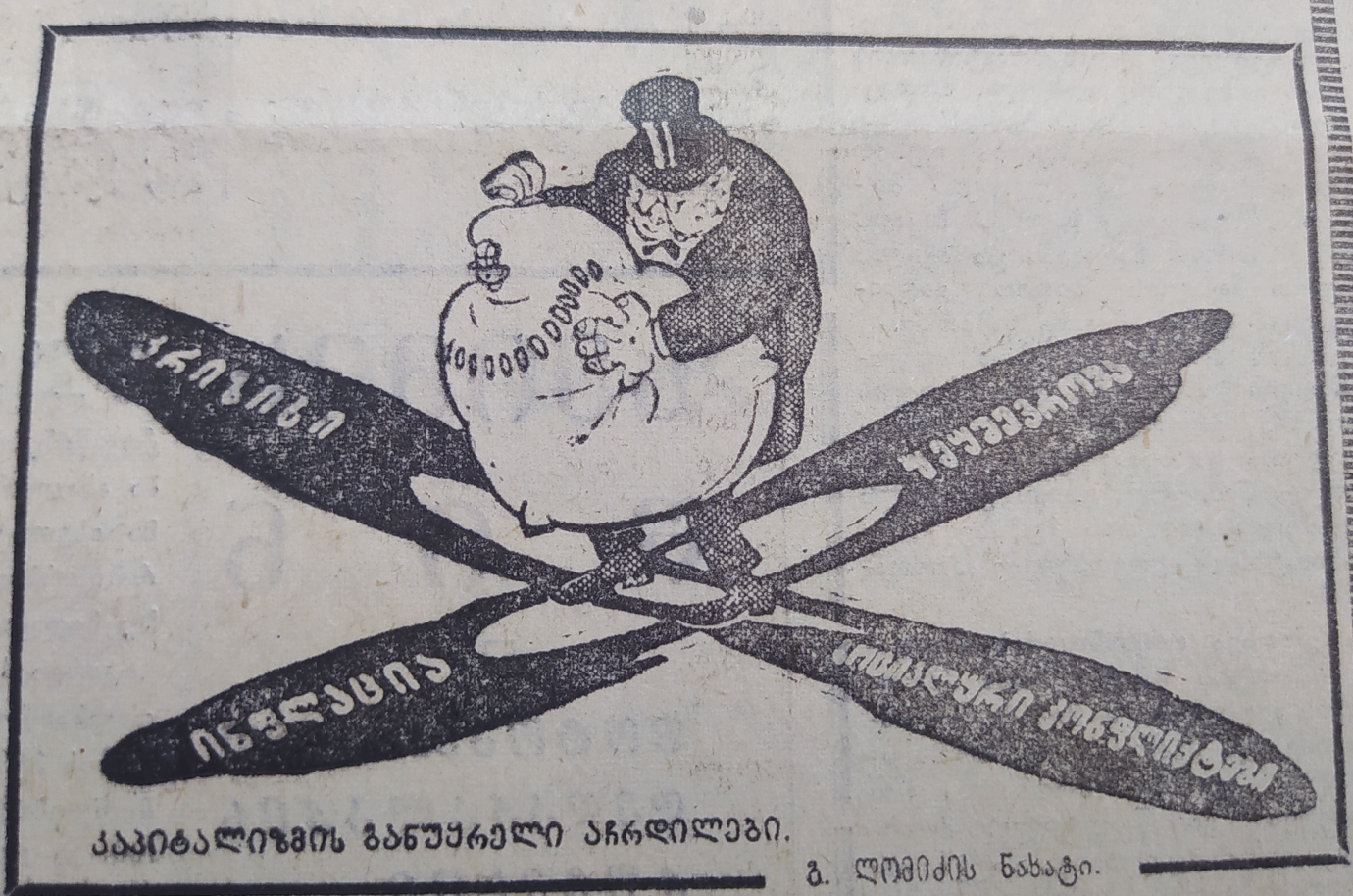
Newspaper “Communist”, Issue of November 6, 1975
In the issue of June 8, 1975, the column "World Cities" was dedicated to San Francisco. The article reads: "Behind the external charm of the city, tens of thousands of Americans have settled in the misery and hopelessness of tomorrow." It is not rare to see such a picture on the streets of the city. This American unemployed man has to play the guitar from morning till night to earn a few pennies and avoid chronic hunger.''
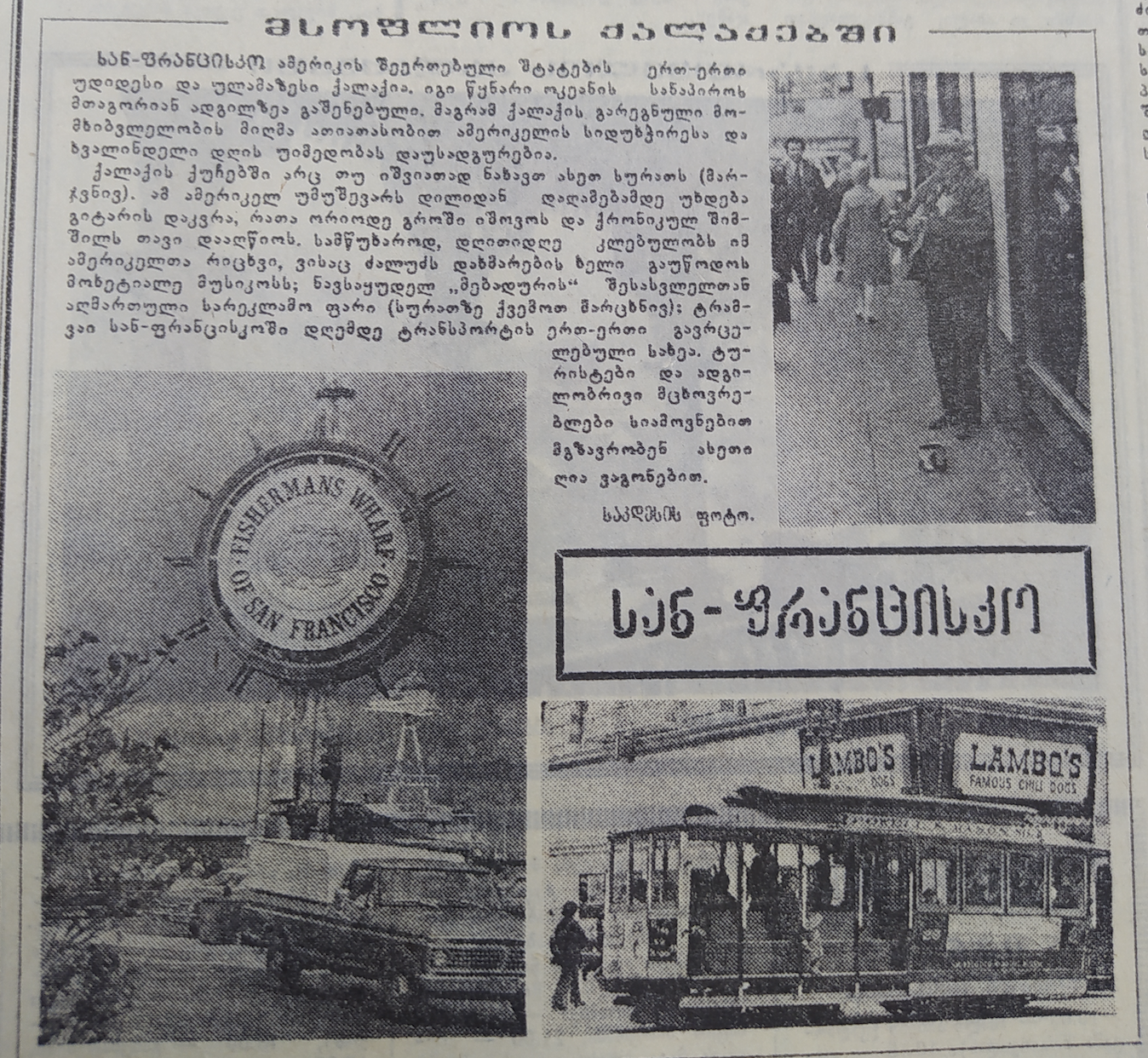
Newspaper „Communist“, Issue of 8 June, 1975
The modern Kremlin is also trying to strengthen the image of the West as a space lacking security, unable to provide prosperity for its citizens. For years, Russian disinformation has claimed that citizens in the West live in poverty and have to choose between food and heating in winter. This messaging was further reinforced following the sanctions imposed on Russia by Western countries due to Russia's re-intervention in Ukraine.
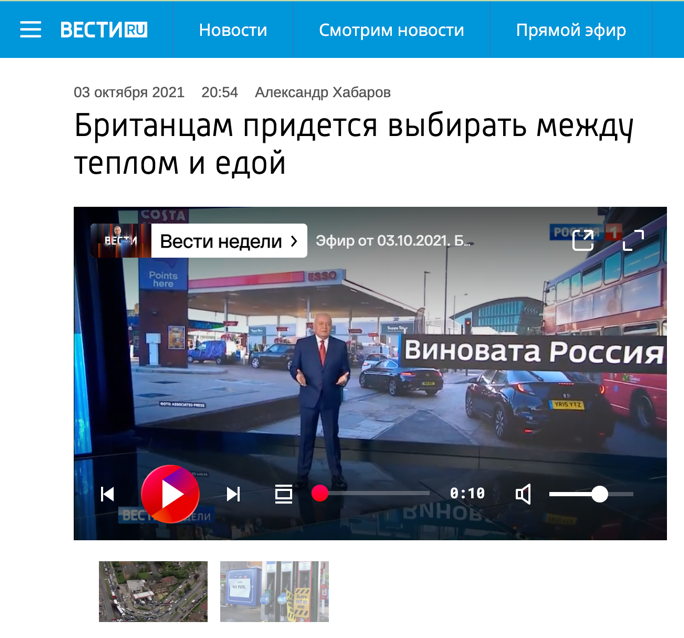
The British will have to choose between warmth and food
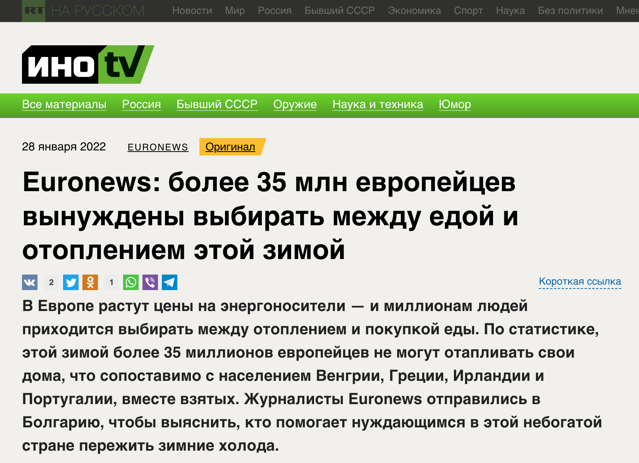
More than 35 million Europeans forced to choose between heating and food during this winter
The West seeks destabilization and intervenes in the domestic affairs of other countries
The disinformation database of the EU vs. Disinfo project of the European Union Center for Strategic Communications lists hundreds of cases of disinformation about US interference in other countries. As a rule, nowadays Russia uses this message to discredit the countries that it still considers to be under its sphere of influence. For example, misinformation that these countries are not actually sovereign independent states and are, in fact, governed by the United States of America, has been spreading about Georgia and Ukraine for years. Of course, it is clear that the target of this message is also the United States of America itself, which in Russia's view is presented as an aggressor state.
The beginnings of this messaging can be seen in the Soviet press. In the issue of February 20, 1977, an article was published under the title "Meddling in the Affairs of Others is Intolerable." According to the author, the USA is trying to interfere in the affairs of the USSR under the pretext of "protection of human rights": "The Soviet side will not tolerate attempts to interfere in its domestic affairs, in matters that are within the domestic competence of states, under the flimsy pretext of "protection of human rights." From a modern perspective, this statement is especially ironic, considering that it is Russia that carries out military interventions in other countries under the pretext of protecting the rights of Russian-speaking citizens. A number of articles with the same content were published around the topic of the Cyprus crisis. These articles claimed that the USA and NATO were carrying out destabilization and interference in the internal affairs of Cyprus. January 23, 1973, issue reads: "NATO circles, together with local reactionaries, provoked armed clashes between the Greeks and Turks on the island in 1963, hoping that in such a situation they would overthrow President Makarios, isolate the country, and destroy the independent state of Cyprus."
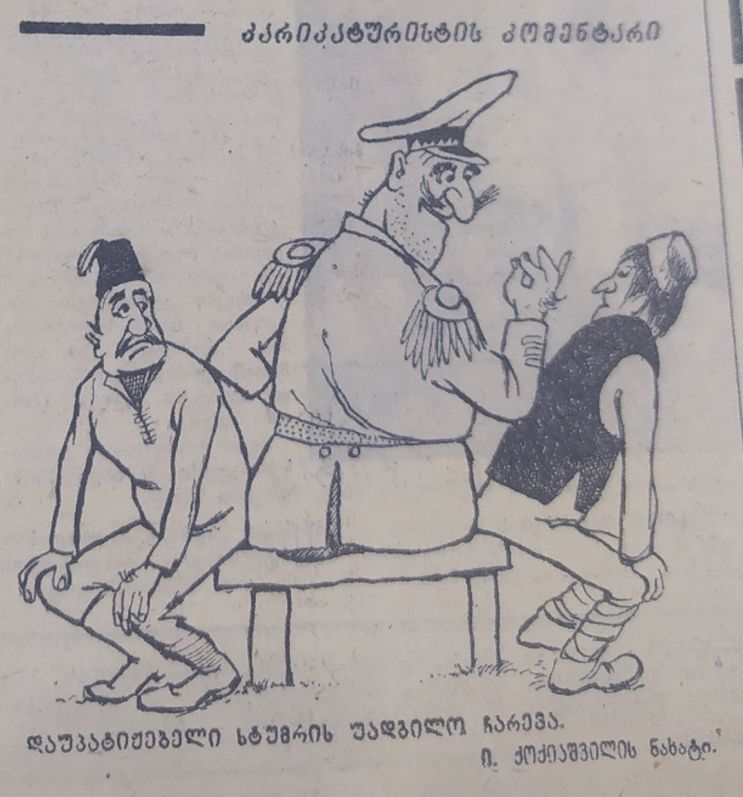
Newspaper„Communist”,Issue of February 22, 1975
As such, the representation of the Western world as a divisive and conflict-inciting actor was characteristic of the Soviet press of the 1970s.
USSR – peacemaker,the West (NATO) – provocateur
The 1970s were characterized by détente, i.e. reset policy. A number of articles were published in the Soviet press about arms control and improved relations between the US and the Soviet Union. As a rule, the Soviet press presented the Soviet Union as the main initiator of peace. Parallel to this, articles critical of NATO plans and NATO exercises were being published. A dichotomy was generatedwhere, while the USSR wants peace, NATO was escalating the situation, and NATO's military exercises were judged as a provocation.
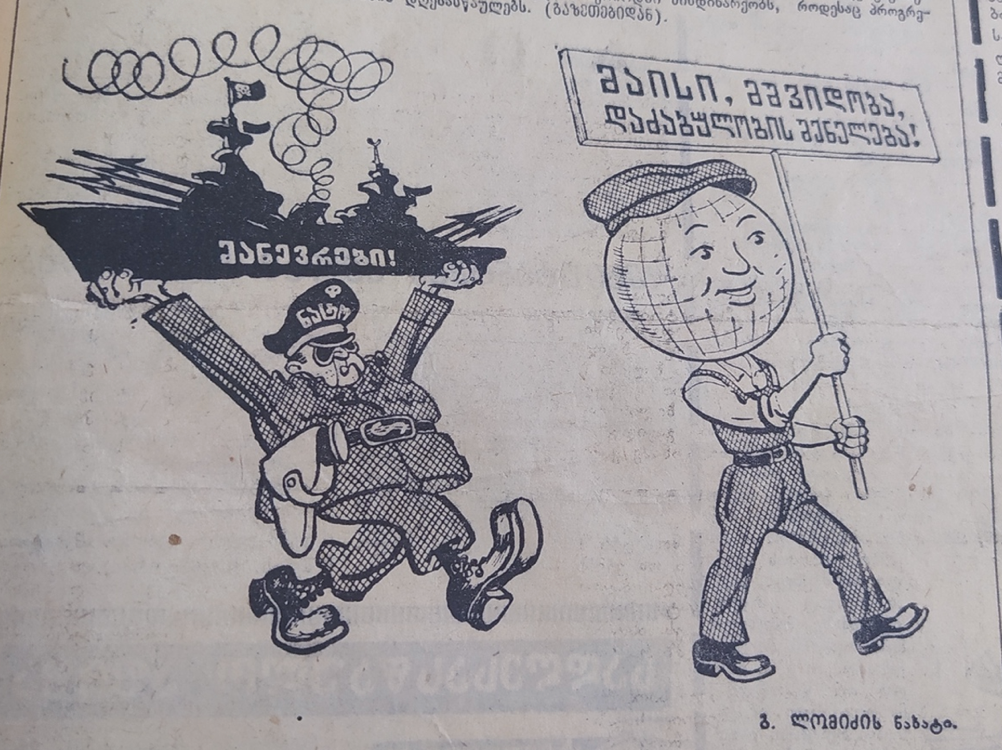
Newspaper„Communist”,Issue of May 1, 1975
One of the main messages of the modern Kremlin with regard to the intervention in Ukraine is that while Russia desired peace, the actions of the West and Ukraine pushed it towards "radical decisions". This is how Putin explained the recognition of Donetsk and Luhansk on February 21, 2022, as well as the military intervention on February 24. Today, Russia accuses NATO of violating the agreement and says that NATO's expansion in Eastern Europe is an existential threat to Russia's national security. In the 1970s, the NATO exercises in the Mediterranean Sea and the accession negotiations with Spain were presented in the same way. The issue of June 14, 1973, reads: "Military circles of the North Atlantic Alliance attach decisive importance to the eastern part of the Mediterranean Sea. Socialist Europe is close from here, and from here they consider it possible to push their political-economic and military expansion in the Middle East and Africa."
“A united West”
The pages of the newspaper "Communist" clearly showed the narrative that the West is divided. The purpose of this message was to present the Western countries as being on opposing sides. Articles about divisions in Western countries were frequent. One comes across publications with titles such as "A united Europe without unified ideas", "There are still disagreements in the European economic union", etc.
The image of the "divided", "fragmented" West is one of the important messages of today's Russian anti-Western propaganda. This message was especially intensified after Brexit, when Russian propaganda tried to portray the EU as a weak and fragmented space.
The main targets of propaganda
The main target of "communist" propaganda during the decade was the United States. Special attention was paid to the issue of race, which featured several main characters. In 1970-72, one of the most discussed topics in the pages of “Communist” was the arrest of Angela Davis, a member of the "Black Panthers", to whom dozens of articles, poems, panegyrics, eulogies, etc., were dedicated during her 18-month imprisonment. As it happens, Angela Davis is a frequent guest of modern Russian propagandist media and talks about racism from Russia Today, Tass, and other platforms.
In the political life of the USA, the newspaper criticized the two-party system and considered the electoral system flawed even at the time when one-party elections were being held in USSR. The US elections remain one of the main targets of Russian propaganda. For instance, Russia's information influence operations were particularly active during the 2020 US presidential election. Russian sources spread disinformation that the US election was not free and that it was massively rigged, on top of spreading a conspiracy theory that the 2020 election was rigged by the Democrats and the results were not real.
In addition to the "main rival" in the form of the USA, the newspaper actively covered Israel, often referring to Jews as fascists and Zionists and focusing on the oppression of Arabs. The newspaper devoted many caricatures to this issue.
The September 7, 1972, article of "Communist" about the Munich terrorist act stands out for its anti-Semitic sentiment. The people of the Western world observed this event, one of the most outstanding tragic ones of the 1970s, practically live. The 20-hour terror attack resulted in the deaths of 11 representatives of the Israeli sports delegation and a West German policeman. "Communist" discussed the event dryly in a small column and referred to it as "an incident in the Olympic village".
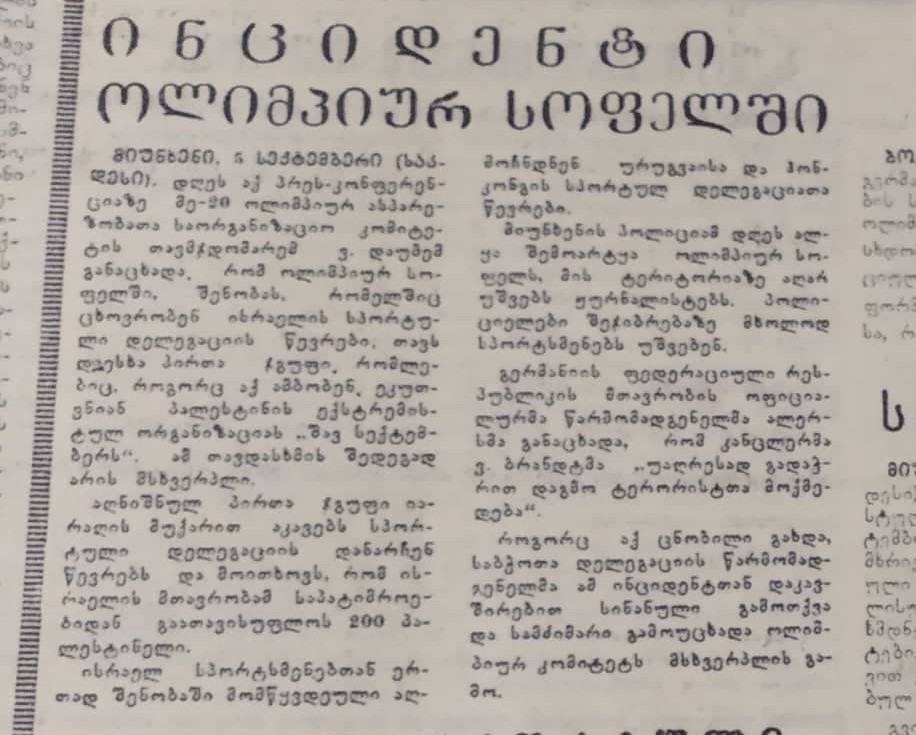
Newspaper„Communist”,Issue of September 7, 1972
Propaganda methods
The analysis of the "Communist" newspaper shows that the Soviet Union used various methods of propaganda in order to demonize the West. These methods are still used today by Russia to spread anti-Western disinformation.
The most prominent methods used in Soviet propaganda involved exaggeration, selective reporting, and demonization. It should be noted that the Soviet propaganda, for the most part, provided correct information to the readers, although the information was constructed in such a way that the readers would only have a negative perception of the West. Soviet propaganda focused mainly on the economic crisis of the 1970s and the devaluation of the dollar, and on individual cases of crime. As Czechoslovak intelligence agent Ladislav Bittman said in an interview with the New York Times, "The most successful operation of this kind [active measures] must contain an element of truth, so that the disinformation as a whole can be widely acceptable."
There was also a separate section dedicated to capitalist countries in "Communist", called "In the countries of the Capital". It was here that information about unemployment, inflation, crime, and other negative news was published. Information about the West was selectively presented to paint a generalized picture of capitalist countries as dens of misery and crime. At the same time, the column "In socialist countries" was printed there as well, which, of course, only contained positive information. With this, Soviet propaganda tried to portray socialist countries as the only safe places.

Newspaper„Communist”,Issue of January 1, 1975
In terms of methods, so-called whataboutism, i.e. shifting blame, is worth highlighting. This technique involves avoiding a difficult or critical question by reversing the accusation or asking the opponent about another issue. For example, the Soviet press had many articles about the activities of the US Central Intelligence Agency, accusing the US of espionage. In the March 15, 1975 article, "Service for Tattletales," the author says that Israel is the first country in the world to establish a telephone service for accusing others. The coverage of the issue of arms is also a classic case of "whataboutism". During this period, a lot of information about the military budgets of America and the West are mentioned with the term - "quick arming". The Soviet Union, meanwhile, despite the active war in Afghanistan, still maintains the "peacekeeper status".
Another distinctive method was the use of the Western press as a source. Most of the foreign news in the Soviet press was based on the Western press. However, these stories gave the impression that the information was not fully translated or was cherry-picked from the original source. Verification based on Western sources is also a characteristic technique of modern Russian disinformation. In this way, Russia is trying to gain credibility and legitimacy, so that the manipulatively disseminated information seems more believable to the readers.
Soviet propaganda also used the communist parties of Western countries. Articles were constructed to create the impression that people living in capitalist countries were expressing dissatisfaction with the West, when in reality the statements were made by members of communist and socialist parties.
Conclusion
In the Soviet Union, a number of narratives and visual products were created around the situation beyond the "Iron Curtain" and, in general, the image of the West, which were disseminated through large-scale media. Despite the variety of narratives, their content was similar and the main point was that life in the West was worse than in the Soviet Union.
The parallels with modern propaganda narratives show that modern Russian anti-Western propaganda originates from the Soviet period. Not only the messages, but often even the propaganda methods are identica. The difference lies in the modern techniques the Kremlin uses in its disinformation and influence spreading operations, including social media, the use of fake accounts and inauthentic networks, botnets, and more.
Note: The blog post is one piece of the research study. The full study will be published on the websites of IDFI and the Investigative Media Lab of the University of Georgia.